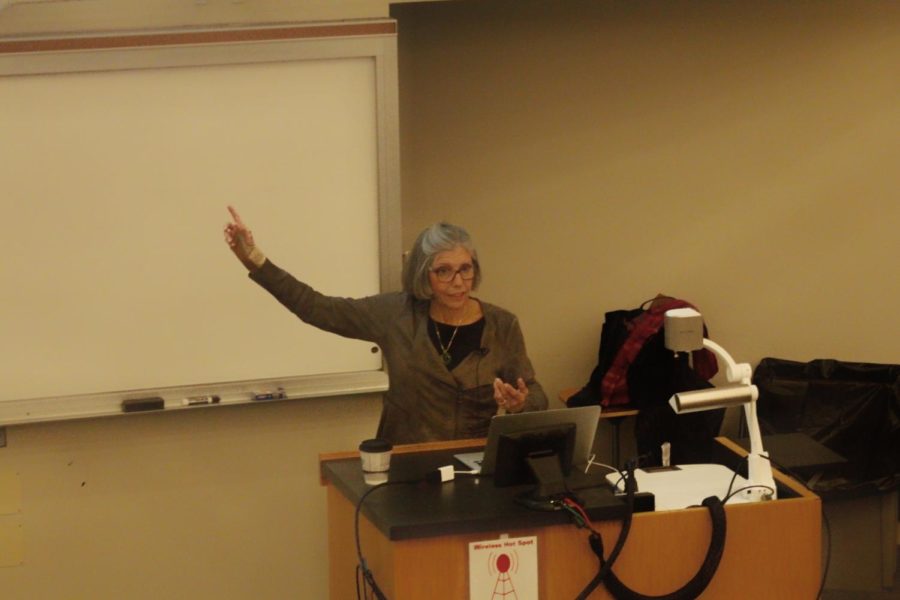Mary Comerio on resilience and lessons from disaster relief
Andrew Kowalski/Iowa State Daily
Mary Comerio, an architecture department faculty member at The University of California Berkeley lectures at Iowa State’s college of design on October 24th. Comerio taught students the importance of designing buildings and urban areas with the possibility of natural disasters in mind.
October 24, 2018
Mary Comerio discussed the concept of urban resilience and lessons from disaster recovery Wednesday at the College of Design’s Kocimski Auditorium.
Depending on the event, and local and national context, strategy for recovering the architecture after disasters will be different, Comerio said.
Comerio said there are certain things that make recovery difficult, such as uncertainty and time compensation. Comerio also said planning dilemmas make recovery difficult, such as whether communities decide to reform or conform to the existing government in the area, or create new organizations.
“People have to get used to the idea that you don’t just get your house back and everything goes back to normal,” Comerio said. “it’s not going to be the same.”
Comerio gave examples of different cities around the world that have been affected by natural disasters and how the government aided in the recovery.
In New Zealand, China and Chile, disaster recovery occurred at a quick pace because the government engaged itself with the local communities to assess the damage. The government then came up with solutions such as implementing higher taxes on the more wealthy companies, Comerio said.
Comerio also talked about funding dilemmas that people have to deal with such as government money, insurance and the private market.
“When you have very high devastation to an urban core, you really have to think about the economic and social recovery,” Comerio said.
Comerio concluded with improvements for the future, such as reducing the loss of function by reducing damage, identifying which building codes that need to be changed, and how communities can prepare for natural disasters.
“The way things recover are not in sync,” Comerio said. “You really have to think about how you optimize those things…resilience is a pathway to developing an economic and socially sustainable future.”
Comerio is internationally recognized as an expert on disaster resilience, recovery and the author of, “Disaster Hits Home: New Police for Urban Housing Recovery”. She has researched seismic rehabilitation, post-disaster recovery and reconstruction, loss modeling and resilience-based design.
At the Pacific Earthquake Engineering Research Center, Comerio led the FEMA-sponsored Disaster Resistant University Program and researched building systems with Helmut Krawinkler.
Comerio was awarded the United Nations Green Star Award in 2011 for her post-disaster reconstruction work in China and Haiti, according to the lectures website.
















